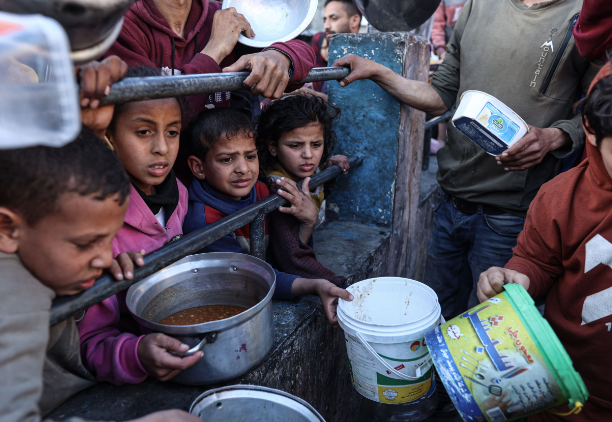U.N. Warns of Famine in Northern Gaza
Since October 7, when Hamas began a major attack, Israel has stepped up its military operations in Gaza against Hamas, causing a humanitarian crisis. The Rafah crossing from Egypt, which is a key way for aid to get in, is still closed because of the ongoing fighting. Because of this, important goods have stopped coming in, and at least 82,000 metric tonnes cannot be sent. Also, crossing through Israel’s Kerem Shalom crossing is limited because of ongoing fighting and difficult logistics.
Impact on Aid Delivery
Closures and restrictions at the Rafah and Kerem Shalom crossings have made it very hard for food and drugs to get to people who need them. On May 20 2024, the United Nations (UN) said that these goods were building up in Egypt and couldn’t get to Gaza. Also, aid deliveries from a new U.S.-built pier were interrupted, and there were no deliveries the next days, making an already bad condition even worse.
Humanitarian Responses and Limitations
In reaction to the crisis, aid has started to come through a new maritime corridor that includes a pier built by the United States. This is meant to help with the lack of supplies. In the beginning, U.N. contractors were able to get help to a World Food Program warehouse in Deir El Balah. But security and logistics problems make this method less useful. For example, in a recent incident, people in the area stole some aid because there wasn’t enough of it.
Fuel Shortages and Impending Famine
There isn’t enough fuel in Gaza—only 654,000 litres have been sent since May 6, which is a lot less than what is needed. This lack makes it harder for people to go about their daily lives and for important services like hospitals to run. The UN has also warned that a famine is about to happen in northern Gaza because it is hard for help to get there and Israeli forces are still ordering people to leave.
More About Rafah crossing
At the Rafah Crossing, which is on the southern edge of Gaza, people and cars can cross between the Gaza Strip and Egypt. After Israel pulled out of Gaza in 2005, this was the only way for Gazans to cross the border after it was officially opened in 1982. Historically, the crossing was run by the Palestinian Authority with oversight from the European Union. After 2007, it was run by Hamas after they took control of Gaza. The crossing’s operation depends a lot on Egypt’s political stance, which often means it has to be closed for security reasons. These restrictions have a big effect on Gaza’s economy and the ability of its people to move around. Also, the crossing had a rare alignment in 2017 when both Hamas and the Palestinian Authority worked together to run its activities for a short time.
Month: Current Affairs - May, 2024
Category: International / World Current Affairs


